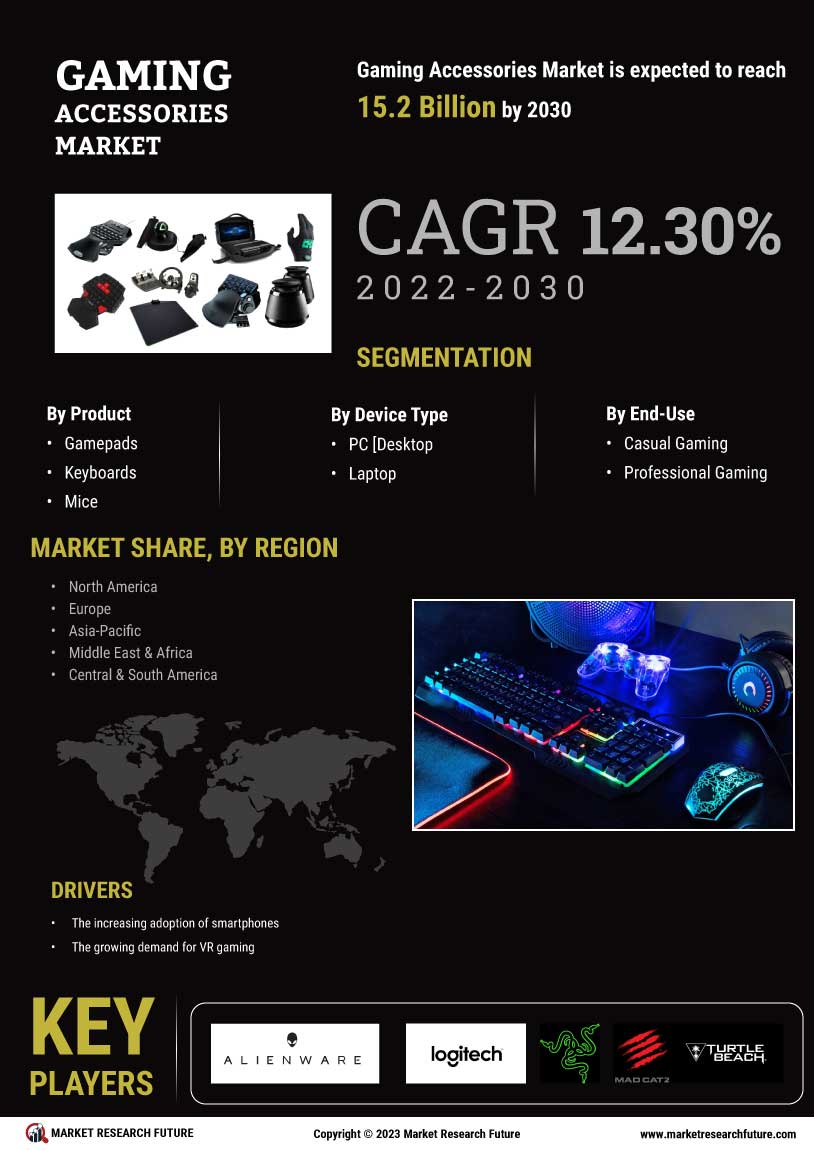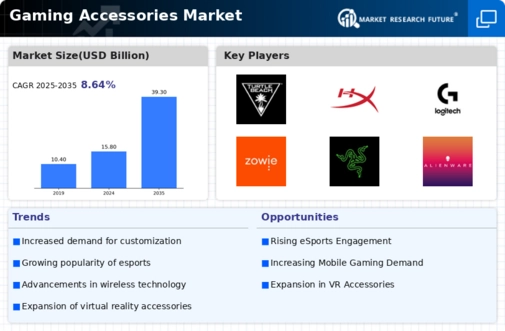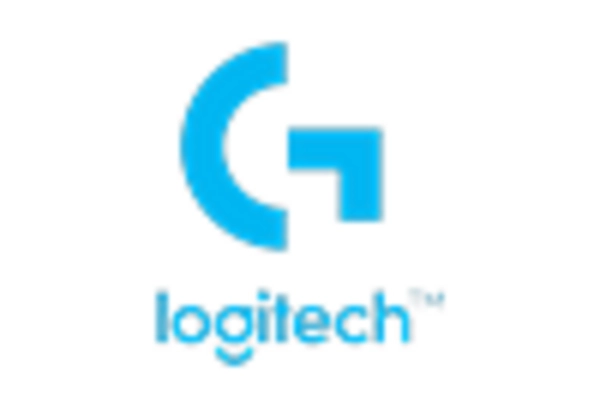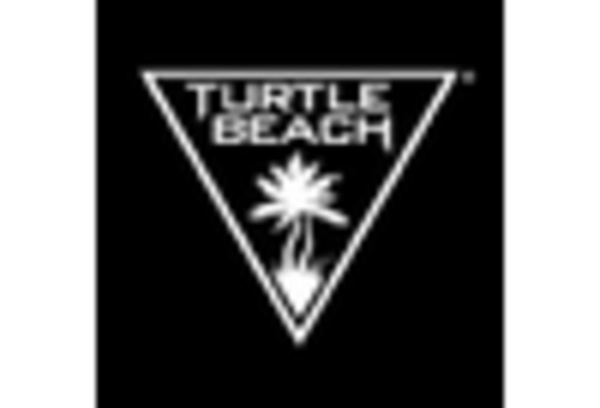Market Growth Projections
The Global Gaming Accessories Market Industry exhibits promising growth projections, with anticipated market values reaching 15.8 USD Billion in 2024 and 39.3 USD Billion by 2035. The compound annual growth rate (CAGR) of 8.64% from 2025 to 2035 indicates a robust expansion trajectory. This growth is fueled by various factors, including technological advancements, increased participation in gaming, and the rise of eSports. As the industry evolves, the demand for innovative gaming peripherals is likely to intensify, suggesting a dynamic market landscape that adapts to consumer needs and preferences.
Diverse Consumer Demographics
The Global Gaming Accessories Market Industry is characterized by diverse consumer demographics, which significantly influences purchasing behavior. Gamers span various age groups, genders, and backgrounds, each with unique preferences for gaming accessories. This diversity creates opportunities for manufacturers to develop tailored products that cater to specific segments, such as casual gamers, competitive players, and streamers. As the gaming population expands, the demand for specialized accessories is likely to increase, driving market growth. Understanding these demographic nuances allows companies to strategically position their products, enhancing their appeal across different consumer segments.
Increased Investment in eSports
Increased investment in eSports has a profound impact on the Global Gaming Accessories Market Industry. As eSports gains mainstream recognition, sponsors and investors are pouring resources into tournaments and teams, driving demand for high-performance gaming accessories. Players and teams often require top-tier equipment to compete at high levels, leading to a surge in sales of premium peripherals. This trend is expected to contribute to the market's growth, with a projected CAGR of 8.64% from 2025 to 2035. The financial backing of eSports not only elevates the profile of gaming accessories but also encourages innovation within the industry.
Growth of Online Gaming Communities
The Global Gaming Accessories Market Industry benefits significantly from the growth of online gaming communities. Platforms such as Twitch and Discord foster social interaction among gamers, creating a vibrant ecosystem that encourages accessory purchases. Gamers often seek peripherals that enhance their online experience, such as high-quality microphones and webcams for streaming. This trend is likely to continue as more individuals engage in online gaming, leading to increased sales of accessories. The community-driven nature of gaming suggests that as participation rises, so too will the demand for specialized gaming gear, further propelling market growth.
Rising Demand for Immersive Gaming Experiences
The Global Gaming Accessories Market Industry experiences a notable surge in demand for immersive gaming experiences. Gamers increasingly seek accessories that enhance their gameplay, such as high-fidelity headsets, advanced controllers, and VR equipment. This trend is driven by the growing popularity of eSports and competitive gaming, which require precision and responsiveness. As a result, the market is projected to reach 15.8 USD Billion in 2024, reflecting a robust consumer preference for high-quality gaming peripherals. The increasing integration of augmented reality and virtual reality technologies further fuels this demand, suggesting a promising trajectory for the industry.
Technological Advancements in Gaming Accessories
Technological advancements play a pivotal role in shaping the Global Gaming Accessories Market Industry. Innovations in wireless technology, haptic feedback, and ergonomic designs are transforming the way gamers interact with their devices. For instance, the introduction of low-latency wireless headsets and customizable gaming mice enhances user experience and performance. These advancements not only cater to casual gamers but also attract professional players who require precision tools. As the market evolves, the potential for growth appears substantial, with projections indicating a market value of 39.3 USD Billion by 2035, driven by continuous innovation and consumer demand.
















Leave a Comment